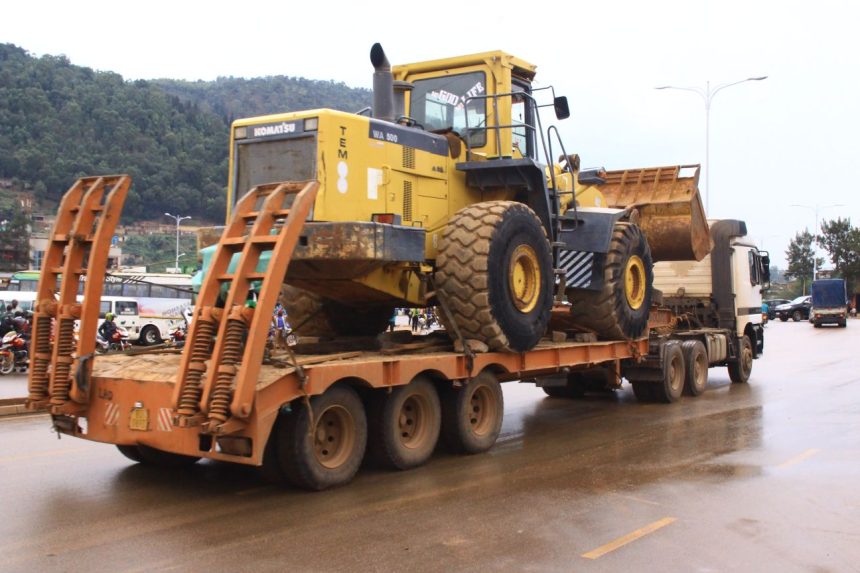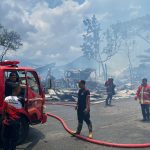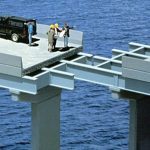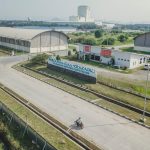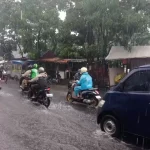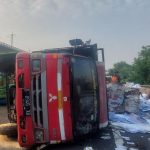The heavy equipment industry is the backbone of various strategic sectors such as mining, construction, and forestry. The success of large projects depends heavily on the availability of heavy equipment in prime condition and safety. However, before the equipment can operate in the field, there is a crucial step that is often overlooked—mobilization, or transporting the equipment from one location to another.
The mobilization process is actually the most critical phase in the heavy equipment life cycle because it carries the potential risk of damage and loss. This article will discuss how these risks can be effectively managed through a risk management approach and appropriate insurance support, particularly with the crucial role of insurance brokers.
Why Heavy Equipment Mobilization Has High Risks
Mobilizing heavy equipment is different from shipping regular goods. The sheer weight, non-standard shapes, and high asset value of this process require careful planning. Heavy equipment such as excavators, bulldozers, dump trucks, or cranes often need to be partially disassembled, transported by low bed trailer, ship, or pontoon, and then reassembled at the project site.
During the process, risks that may arise include:
- Damage due to transportation accidents, such as a truck overturning on an uphill or slippery road.
- Damage due to incorrect handling, for example when loading and unloading with a crane or forklift.
- Damage due to extreme weather conditions, such as storms or high waves during shipping by sea.
- Theft of expensive components such as undercarriage or hydraulics in transit areas.
- Human error in the process of tying, lifting or placing heavy equipment.
All these risks can cause major losses, both in terms of repair costs and delayed project time.
Case Study: Losses Due to Lack of Protection
In recent years, several heavy equipment mobilization accidents have been recorded in Indonesia. For example, heavy equipment worth billions of rupiah fell into the sea while being loaded onto a pontoon, or a new dump truck overturned due to damaged roads in a mining area.
Without adequate insurance coverage, heavy equipment owners are left to cover all losses themselves. In some cases, the equipment can even be rendered unusable because repair costs exceed its market value—a total loss.
This is why special insurance coverage for the mobilization process is so important, not just when the equipment is already operating on site.
The Role of Insurance in the Mobilization Phase
To anticipate these risks, the insurance industry provides several types of relevant coverage, including:
- Marine Cargo Insurance (Cargo Insurance): Covers heavy equipment against risks during shipping by land, sea, or a combination of both.
- Contractor’s Plant and Machinery (CPM) Insurance: Protects heavy equipment while it is in use at the project site, can be extended to include mobilization.
- Third Party Liability (TPL): Provides protection if the mobilization of heavy equipment causes loss to a third party, such as damage to public roads or other vehicles.
- With the right combination of policies, heavy equipment owners can minimize the potential for financial loss due to unforeseen incidents.
The Importance of Pre-Shipping Risk Management
Before implementing insurance, a wise first step is to implement risk management principles. Some recommended steps include:
- Inspect heavy equipment before delivery to ensure road-ready condition.
- Determine a safe route by paying attention to road, bridge and terrain conditions.
- Appoint an experienced transportation contractor with adequate transport equipment.
- Make photo documentation and reports of the condition of the equipment before and after delivery.
- Inform the insurance company of your travel details so that coverage is effective.
These simple steps are often the difference between a smooth shipping process and one that ends in a large claim.
Why You Should Go Through an Official Insurance Broker
Arranging a heavy equipment insurance policy, especially one involving mobilization risks, should not be done directly with an insurance company without professional guidance. Many cases demonstrate that even minor errors in determining clauses, coverage amounts, or exclusions can result in claims being partially or completely denied.
Authorized insurance brokers, such as L&G Insurance Broker, act as representatives of the insured’s interests, not the insurance company’s. They possess the technical expertise to interpret risks, develop policy wording appropriate to the specific situation, and assist clients during the claims process.
Furthermore, authorized brokers are supervised by the Financial Services Authority (OJK) and are required to adhere to competency standards and a professional code of ethics. Therefore, working with a broker ensures objectivity, legal protection, and efficiency in managing heavy equipment risks from mobilization to full operation.
Claims Process: From Report to Settlement
One of the main challenges in heavy equipment insurance is the often-complex claims process. Mobilization claims can involve the transporter, equipment owner, surveyor, and even the insurance company.
Brokers act as coordinators and advocates for clients, ensuring all evidence is gathered correctly, communication is effective, and claims are assessed objectively. With extensive experience, experienced brokers can expedite claims resolution and ensure clients receive compensation commensurate with the true value of their losses.
Learning from a Real Case: Claims Worth Billions of Rupiah
In the heavy equipment industry, there are many examples of successful significant claim settlements—from sinking heavy equipment worth Rp17 billion, to total damages worth over USD 1 million during operations on large mining projects.
These cases demonstrate that with the support of an experienced broker, claims can be resolved quickly, transparently, and to the satisfaction of all parties. This success not only recovers financial losses but also maintains the smooth operation of companies amidst large-scale projects.
Protection Begins Before Equipment Operation
Heavy equipment mobilization isn’t just a logistical matter—it’s also an integral part of corporate risk management. Every kilometer of heavy equipment travel carries the potential for significant losses if not properly managed.
Through a combination of risk management, appropriate insurance, and support from authorized insurance brokers, companies can ensure that high-value assets are protected from the moment they leave the warehouse until they arrive safely at the project site.
As one of the leading insurance brokers in Indonesia,L&G Insurance Broker has experience handling more than 2,000 units of heavy equipment from various well-known brands such as Sany, XCMG, LiuGong, SDLG, Weichai, Zoomlion, Lovol, and others. With a track record of resolving hundreds of high-value claims quickly and professionally, L&G is committed to being a strategic partner for companies that want to ensure every piece of heavy equipment is optimally protected—from the mobilization stage, through operations, to the end of the project.
—
DON’T WASTE YOUR TIME AND SECURE YOUR FINANCIAL AND BUSINESS WITH THE RIGHT INSURANCE.
HOTLINE L&G 24 JAM: 0811-8507-773(CALL – WHATSAPP – SMS)
Website: lngrisk.co.id
Email: halo@lngrisk.co.id
—


